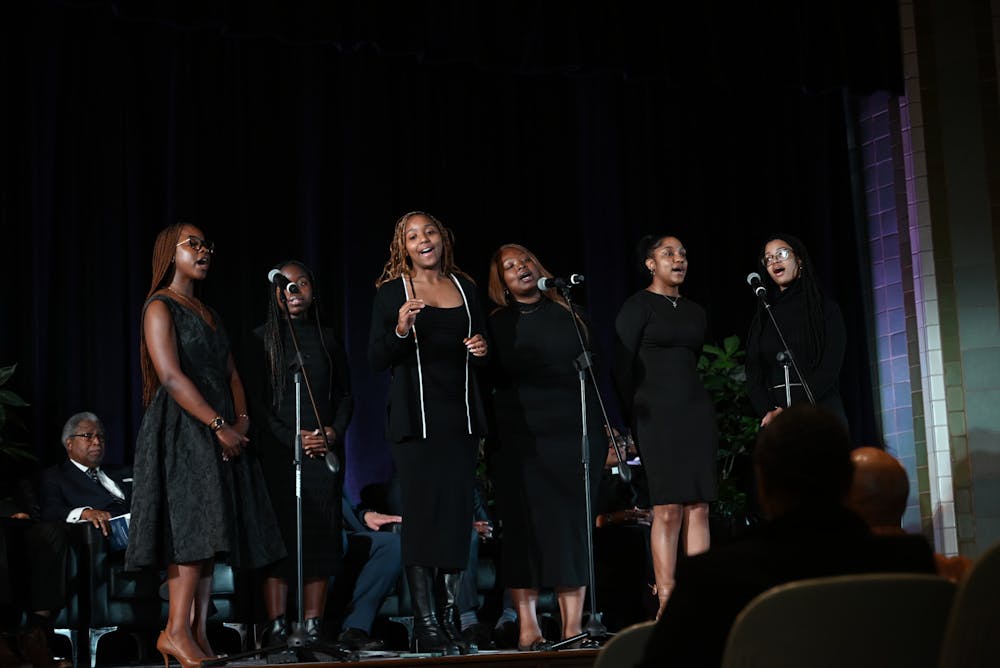As of late, most of my columns have focused on things I take issue with: Whether it’s Liz Magill’s resignation and the threats to free speech on campus, or the lack of racial diversity in Panhellenic sororities. I haven't highlighted the things that I truly appreciate and, more specifically, the places in which I’ve found community at Penn.
Last February, I argued that Black history is important for everyone. Education surrounding Black people, their lives, and their contributions should be integrated into the standard curriculum. Black Penn shows up and shows out every month, but this month in particular, there are many events and ways that Penn student organizations uplift the community and come together.
It would be impossible to touch on all of these amazing events and their impacts, but I’d like to paint a picture of some of these groups and their initiatives during this month and beyond. Planning for these events takes months. For example, when Descendants of Afro-Americans at Penn (DAAP) — a club founded just last year — put on their first-ever gala on Feb. 1 to kick off the month, you better believe that the event was well-planned and executed.
The gala — Red Carpet For A Cause — supported the Sickle Cell Disease Association of America's Philadelphia and Delaware Valley Chapter. The night included catered food, live performances from student groups like The Inspiration, wonderful community, and beautiful decor—even including an ice sculpture of the DAAP logo. Over $1,700 was raised in support of the foundation.
When asked about the impacts of the event, College sophomore and DAAP founding member Clarke Dickens said, “We wanted to bring the community together for a great cause, especially a cause that affects a lot of African Americans and Black people more broadly.”
Sickle cell disease occurs in about one in every 365 Black babies born in the United States. The percentage of Black people who carry the trait is even higher, with one in 13 Black babies being born as carriers.
Dickens is not just involved with DAAP, but is also on the boards for QBlack and Shea Collective.
These clubs are all part of something commonly dubbed “Black Penn,” which focuses on so many different aspects of identity. From cultural organizations like Penn African Student Association (PASA), to preprofessional organizations like Black Wharton and the Black Pre-Law Association (BPLA), to community service organizations like the NAACP, all of these organizations put an emphasis on service both inside the Penn community and out.
For example, Campus Curlz — a club I serve on the board of — is, at first glance, a club centered around uplifting natural hair and embracing positivity. But underlying hair mask making events and movie nights, there is a strong commitment to service. Just this month, the community service committee held an event where we made Valentine’s Day cards for senior citizens at Mercy Life West Philadelphia.
Service by board members is a requirement to be part of funding organizations like UMOJA — the umbrella funding organization for Black clubs — and even beyond that, many clubs center service in every activity they partake in. Whether you’re on the board of a club or not, there are many service opportunities available and encouraged.
When asked what they wish people knew about Black Penn, Dickens said, “Clubs should make an effort to include grad students, it makes all the difference. I’m able to say, ‘This is what I would look like coming here for grad school,’ and it can even offer opportunities for mentorship.”
What seems to drive Black Penn is first and foremost the students, then the supportive and involved faculty, as well as the local partnerships and opportunities the clubs find, build, and pursue for themselves. Many members of the DAAP board are native to Philadelphia, so that makes their work even more personal.
While Black students do take initiative to realize what they need and create the spaces they want to see, there is so much room for improvement on behalf of Penn: whether it’s stratifying the way funding is given to these clubs — they often can’t fund silverware in UMOJA meetings if it can be provided elsewhere — or improving the cultural spaces available to students (we were promised the ARCH ‘building,’ not the ARCH ‘basement’). In months like February, Penn aims to spotlight their Black students. I just wish this recognition of the incredible community Black students forged for themselves, when they initially didn’t see it on campus, came year-round.
Events like DAAP's gala happen every month, and it’s important not to understate the role these organizations play in making Penn a welcoming and accepting place for students from marginalized backgrounds.
I was happy to see Faces of Black Penn — a Black-run publication — highlighted in the DP last week. I hope people continue to uplift the work of these student groups going forward and make space to give all students their roses. Black History Month is not over, and the time to appreciate Black students and their work does not end come March.
MIA VESELY is a College sophomore studying philosophy, politics, and economics from Phoenix, A.Z. Her email is mvesely@sas.upenn.edu









